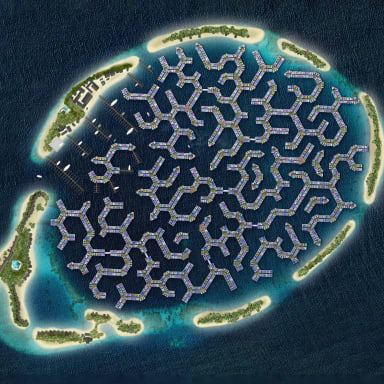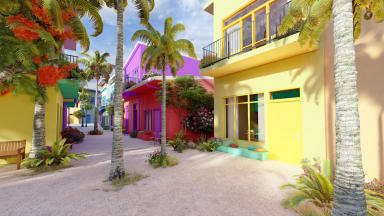Floating city in Maldives

Acity is rising from the waters of the Indian Ocean. In a turquoise lagoon, just 10 minutes by boat from Male, the Maldivian capital, a floating city, big enough to house 20,000 people, is being constructed.
Designed in a pattern similar to brain coral, the city will consist of 5,000 floating units including houses, restaurants, shops and schools, with canals running in between. The first units will be unveiled this month, with residents starting to move in early 2024, and the whole city is due to be completed by 2027.
The project -- a joint venture between property developer Dutch Docklands and the Government of the Maldives -- is not meant as a wild experiment or a futuristic vision: it's being built as a practical solution to the harsh reality of sea-level rise.
An archipelago of 1,190 low-lying islands, the Maldives is one of the world's most vulnerable nations to climate change. Eighty percent of its land area is less than one meter above sea level, and with levels projected to rise up to a meter by the end of the century, almost the entire country could be submerged.


Acity is rising from the waters of the Indian Ocean. In a turquoise lagoon, just 10 minutes by boat from Male, the Maldivian capital, a floating city, big enough to house 20,000 people, is being constructed.
Designed in a pattern similar to brain coral, the city will consist of 5,000 floating units including houses, restaurants, shops and schools, with canals running in between. The first units will be unveiled this month, with residents starting to move in early 2024, and the whole city is due to be completed by 2027.
The project -- a joint venture between property developer Dutch Docklands and the Government of the Maldives -- is not meant as a wild experiment or a futuristic vision: it's being built as a practical solution to the harsh reality of sea-level rise.
An archipelago of 1,190 low-lying islands, the Maldives is one of the world's most vulnerable nations to climate change. Eighty percent of its land area is less than one meter above sea level, and with levels projected to rise up to a meter by the end of the century, almost the entire country could be submerged.







